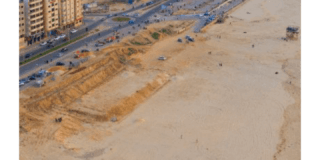“Many of the asylum seekers facing return to Sri Lanka are likely to have valid protection claims. Historically, 90 percent of Sri Lankan boat arrivals to Australia have been found to be refugees. In 2012-13, during which time the number of boat arrivals from Sri Lanka increased significantly, the Department of Immigration and Border Protection (DIBP) reported a 52 percent final grant rate of protection visas for Sri Lankans arriving by boat.
The Australian Government’s own data reveals that the majority of Sri Lankan asylum seekers arriving by boat are found to have genuinely fled the risk of persecution. Returning up to 200 Sri Lankan asylum seekers without any fair, thorough or accountable assessment of their claims creates a clear risk that Australia will be returning people to serious harm.
…
Although Sri Lanka is a party to all the major human rights conventions, the international community continues to express concerns about the failure to uphold basic freedoms, including freedom of association and freedom of expression. While less pronounced than during the civil conflict, there continue to be credible reports of instances of arrest and detention without charge, as well as reports of enforced disappearances and abductions, and intimidation and harassment of the media and members of civil society.”
Mr R Merkel, QC, representing a group of asylum seekers in the High Court of Australia, 7 July 2014.
On the 11th June, 2014 a crammed boat set out from India carrying 157 asylum seekers of primarily Tamil heritage. By the 29th June, news had broken that Australian Border Protection crew had intercepted the boat, taking control of both the boat and its occupants. Since that time, limited contact has been had with the 153 asylees and the Australian Government has flatly refused to discuss where the people have been detained. For four weeks now, the asylees have been detained at sea by Australian officials, reportedly in a windowless Australian Customs vessel, suspected to be the Ocean Protector, men separated from women. So secretive about the location and fate of the asylees has the Australian Government been, that only a few days ago did it become known that there are in fact 157 asylees, four more than first thought. It’s a tale of willful lying on the part of the incumbent leadership, who still seem to “be alarmed” like their former leader, alluding those intercepted as being “illegal”. This term is directly in conflict with the fact that seeking asylum is not illegal. Any person with a fear of persecution or of being subjected to harm within their own country may seek asylum. Once the claim is accepted by the receiving country, the asylee can be officially recognized as a refugee.
On 7th July a second boat carrying 41 asylees was intercepted west of Australia’s territory of Cocos (Keeling) Islands with the occupants all returned to Sri Lanka by the Australian Government. Subsequent media reports that those returned have been charged and face court back in their home country for leaving the country illegally and if found guilty will be subjected to as much as two years of “enhanced imprisonment”. Minister Malcolm Fraser touched upon the hot topic at a Lowy Institute event recently, when Paul Power of the Refugee Council of Australia asked the former prime minister what his opinion was of current Australian policy on international affairs, in particular in relation to asylees:
“We wouldn’t practice piracy on the high seas and capture a boat in international waters and take everyone off it …
I’d certainly want a different minister.”
Malcolm Fraser, Lowy Institute interview, Event: Dangerous Allies – Malcolm Fraser & Michael Fullilove on Australian Foregin Policy, Lowy Institute, 9 July 2014.
Taking up upon this response, Deborah Snow of Fairfax asked the former PM to clarify his response in which he characterized Australia’s latest intervention on the high seas as an act of piracy and to spell out what the ramifications might be:
“I thought that if a ship was sailing in the high seas, freedom of the seas meant that it could continue sailing if it was in international waters. To be apprehended by an Australian Customs vessel or naval vessel, people taken off it, what do you call it? Kidnapping, piracy. It certainly is in breach of international law, and um, it hasn’t been much reported here, but Reuters yesterday morning reported that a police chief in Sri Lanka is saying that all of the passengers who had been returned, the 41 I think, were going to be persecuted for leaving the country illegally and it probably would not be very difficult to prove that and if found guilty he said, they all be subject to enhanced imprisonment. What’s enhanced imprisonment? Is that a new name for torture? Sounded very like it.”
Malcolm Fraser, Lowy Institute interview, Event: Dangerous Allies – Malcolm Fraser & Michael Fullilove on Australian Foregin Policy, Lowy Institute, 9 July 2014.
Mr Fraser touts a similar opinion to that of refugee advocate Julian Burnside QC who provides a little more detail into the means by which Customs officials became involved in his response to the ABC in 10th July:
“If they went on to the Australian vessel because they had asked for help and they were offered help, then they seem to have been taken under false pretences because the government not only publicly denied their existence, it also seemed distinctly uninclined to offer them any help.”
At that stage, according to the Australian Human Right Council president Gillian Triggs, those detained by Customs officials were likely to be transferred to a detention centre within a few days. Well, a few days has stretched to weeks and only now are those who have been detained to set foot on land. Underlying all of this remains the stubborn stance of the Abbott government not to sacrifice its dubiously unblemished record to successfully “stop the boats”. Despite the genuine concerns of refugee advocates and the AHRC itself, the government would rather hold tight to its shining success at the expense of humane and compassionate treatment of those seeking asylum. Gillian Trigg commented:
“I said it was increasingly dangerous for asylum seekers on the island and the humane policy should be to bring them to Darwin from Christmas Island for processing,” she said.
“But ultimately they [the government] don’t want their record of no boats arriving to be spoiled, they want to be able to continue to say no boats have arrived for more than six months – they are hoisted on their own petard.”
Davey M, Julian Burnside says government may be guilty of piracy over asylum seekers. The Guardian, 10 July 2014.
Seems the president of the AHRC expects that the incumbent government will be harmed by its inhumane stubbornness toward asylees and the past weeks have demonstrated that there is no lack of champions willing to support the wayward souls. As the 157 were confirmed to have been transferred to the Australian Customs vessel on 8th July, lawyers for those seeking asylum successfully sought an injunction from the High Court on the same day, preventing them from being transferred into the custody of Sri Lanka. That initial injunction was extended and the case continues to be heard in the High Court.
In the transcript of the hearing for the injunction, Justice Crennan heard that communication with those seeking Asylum ceased on 30th June, with no means then available with which to provide legal advice. Also posed in the hearing was the Department of Foreign Affairs own travel advisory for Sri Lanka, warning of an “unpredictable security environment”.
Along with the prolonged detention of the larger group of asylum seekers at sea has come concerns regarding the conditions in which they are being kept. Claims by some of the 41 asylees returned to Sri Lanka suggest that Australian Authorities were less than sympathetic to the requests of the detainees. Included in this have been concerns that the male and female asylees have been segregated and limited to a maximum of three hours of daylight each day. Whilst the Government argues that maintaining space between men, women and children cannot be maintained without segregation, it has had plenty of opportunity transfer the asylees to where families could be together.
With the High Court action still dragging on, India has agreed to take any of its own nationals back and possibly the Sri Lankans. The impasse has been broken, but not without the Australian Government being forced to concede to allowing the asylum seekers to set foot on Australian soil for appropriate processing by officials. The implications of those people reaching the Austrlian mainland is yet to be tested by refugeee advocates and it is likely that this will set off a new round of legal manoeuvering. But it must be noted that it took a country that is not a signatory to the UN Refugee Convention to bring 157 people that requested assistance from Australia when their boat failed in international waters, to be permitted to stand on land again.
The protracted debacle that has been this detention at sea has left the human rights reputation of Australia in a shaky state. The piracy and detention of people by Australian officials outside their own territory raises serious questions regarding the interception of boats at sea to preclude access to Australian territory and about the legitimacy of processing the claims of asylees whilst they are out of reach of legal advice and support. To leave 37 children in such a state for so long is simply unconscionable. Whilst those seeking asylum will finally reach the shores of this country, there is no guarantee that they will be processed in a rapid timeframe, if history and the detention of other asylees on Manus Island or Nauru are anything to go by. The means by which claims are processed is slow and leaves those detained at risk of depression and suicide. We can only hope that the 157 will not be subjected to a long stay in the prison that is immigration detention for much longer and that the refugee advocates will be able to assist in the verification of claims of asylum quickly.
| 13 June | 153 asylum seekers depart Pondicherry in southern India for Australia |
| 26 June | First communication between the asylum seekers and refugee advocate Ian Rintoul. He is advised that there are 153 asylees of which 37 are children. They are heading for Christmas Island. |
| 27 June | Ian Rintoul contacts Australian Maritime Rescue Authority (AMSA) to assist the boat carrying the asylum seekers, as they hare leaking oil. |
| Early June | 37 Tamil and 3 Sinhalese asylum seekers depart for Australia |
| 30 June | Australia intercepts the boatload of 153 asylum seekers. |
| 30 June | Communications with the boatload of 157 asylees is cut off. |
| Late June | A second boatload of 37 Sinhalese and 4 Tamil asylum seekers are intercepted by Border Protection Command authorities west of Australia’s territory of Cocos (Keeling) Islands |
| 2 July | Submission is made to the United Nations Special Rapporteur on torture and other cruel, inhuman or degrading treatment or punishment regarding concerns that those seeking asylum from Sri Lanka were at risk of serious harm if returned to their country of origin. |
| 6 July 2 | The second boatload 41 asylum seekers are returned to Sri Lankan authorities at sea, just outside the Port of Batticaloa. |
| 7 July | Scott Morrison announces the interception of the boat carrying 41 asylees in late June with 4 Tamils and 37 Sinhalese. |
| 7 July | Interim injunction granted by the High Court Of Australia, preventing Australian authorities from returning the asylees to the Sri Lankan navy at sea. |
| 9 July | Australia gifts two Bay Class patrol boats to Sri Lanka to assist in managing maritime security risks and conduct search & rescue. |
| 2 July | Confirmation by the Australian Government that the number of asylum seekers is 157, four more than first thought. |
| 25 July | India agrees to take those asylum seekers of Indian nationality and perhaps Sri Lankan asylees, on the proviso that their officials can interview the asylees on land in Australia. |
| 26 July | Asylum seekers are expected to reach Australia, initially at the Cocos Islands, with processing of their claims to be undertaken after transfer to the Australian mainland at the Curtin Detention Centre in Western Australia. |



